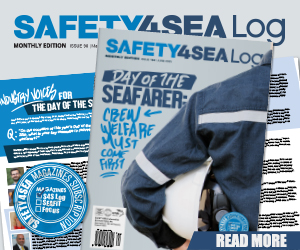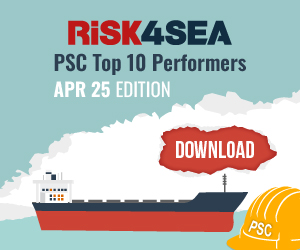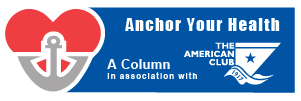After five months of the implementation of IMO Sulphur Cap, our ‘Sea Sense’ column, in association with the North P&I Club, assesses whether the new measure has managed to enhance maritime safety. Namely, we asked global experts to provide feedback on the following question:
Are early experiences of the IMO sulphur cap and the changeover to compliant fuels proving to be a success in terms of safety?
 Dr John Kokarakis Dr John KokarakisVice President Technology and Business Development, Bureau Veritas |
 Frantzeskos D. Kontos Frantzeskos D. KontosDeputy Chief Operating Officer, Prime Marine Management |
|
| Maybe! Two and a half months after the introduction of the sulphur cap the shipping community is and must be “cautiously optimistic” about safe adaptation to the new fuel. Technically, low sulphur fuels have been introduced since January 1st 2016 in the SECA areas, but the global scope of the regulation and the demand for compliant fuel have pushed to the limits. Blends which hate each other have been employed in this journey which has just started. This herculean change so far can be characterized as eventless. We have had no major accidents or losses. Nevertheless, the road to Ithaca is still long and we will need more experience to be confident that we know our fuel, all that there is to know for safety. | Yes, the changeover to compliant fuels has been overall successful in terms of safety. There have been no alarming reports for immobilized vessels or for incidents caused due to compliant fuel quality issues. However the good results should not misguide anyone: in fact the analysis of the compliant fuels recurrently show alarming values of several components, the Total Sediment Potential (TSP) and Total Acid Number (TAN) being the most frequent ones (leading to filters overload and implying the presence of extraneous components in the fuel respectively). Furthermore the unknown combustion behavior of compliant fuels necessitated close monitoring of Main Engine condition by narrowing scavenge space inspections and frequently changing cylinder oils in an effort to combine acceptable residual BN levels, sufficient lubricity and good detergency.It is therefore the good preparedness level of all Shipmanagement companies, the HAZIDs, HAZOPs, RAs conducted throughout 2019 and the mitigating measures adopted that essentially contributed to the good end result, the safety aspect included.
|
|
 Antonis Trakakis Antonis TrakakisTechnical Manager, Arista Shipping |
 Mark Smith Mark SmithLoss Prevention Executive, The North of England P&I Club |
|
| Yes, the experience so far shows that the transition to new compliant fuel did not come at the expense of safety. The circulars available from P&I clubs and fuel testing & advisory companies, do not suggest an increased frequency or serious incidents involving fuels that were off spec. Although this does not mean that everything went smooth.With due prudence that in any case has always to be demonstrated in regard to properties of fuel to be supplied, and guidance to the crew targeted to the important aspects involved with each bunker stem, problems were indeed encountered during the first days, but were actually contained, avoiding really unpleasant situations from occurring. | Yes! Credit should be given where it’s due! Fuel tank cleaning, clogged purifiers, pipes and filters as well as high hydrogen sulphide levels and low flashpoint fuels are just some of the additional challenges thrown at vessels recently. Our experience suggests that these have all been well handled and seafarers have stayed safe.There have been some fuel quality issues and off-spec deliveries, but vessels and their crew have adapted well so far. However, it is vital shipboard engineers keep their guard up – an unstable fuel or rapid liner wear can lead to a loss of propulsion and put the vessel and its crew at risk.
But it’s not just the new fuels that present risks. Many vessels now have scrubbers installed and this means additional equipment and maintenance with the potential for more sea water leaks in the engine room! |
|
 Bill Stamatopoulos Bill StamatopoulosBusiness Development Manager, South Europe Bureau Veritas – VeriFuel |
 George Teriakidis George TeriakidisArea Manager, East Med and Black Sea, DNV GL |
|
| Yes, as no major incidents have occurred so far; we continue to monitor the developments.VLSFOs emerged with the anticipated ‘teething issues’ mostly related to unstable and dirty fuels, high pour point values and some with unusual odour that resulted in crew members’ complaints (the fuels however were consumed with no impact on equipment). The huge variability of the VLSFO’s density, viscosity and cold flow properties reflect the handling challenges on-board. In that respect, two strands are of paramount importance: continuous crew training and the selection of a fuel management service partner with deep knowledge and expertise that can provide timely and to-the-point support. | Yes. In preparation for 2020 the IMO developed several guidelines to support the industry, including the Ship Implementation Plan, which addressed issues and risks related to the use of compliant fuels. Many shipowners started testing these fuels in mid-2019 and the industry was ready for the switch well before the end of the year. During the first three months of enforcement, no major incidents have been reported, to our classification. There have been cases where the fuel quality created problems with equipment onboard, but they have been rather limited and under control. Shipping companies and crews have the challenge managing different fuels onboard, making sure that mixing is avoided and each fuel is treated and handled properly based on its specific properties. It is worth to note that they have been quite successful in managing this transition so far | |
 Kostas Vlachos Kostas VlachosChief Operating Officer, LATSCO Marine Management |
||
| No. The use of VLSFO 0.5% S is really an early experience for the whole shipping industry requiring thus further evidence and data to be collected in order to assess the impact the compliant fuels may have in the normal operation of the M/E. The importance of such monitoring and evaluation of the collected data is very critical for purposes of objective conclusions, since the ships are supplied with 0,5% S VLSFO by different fuel suppliers around the world. The only sure for the time being is that cycle oil is blended into VLSFO with the aim to increase the Calorific value. However these blended fuels don’t like to burn having as an immediate effect the flames to reach the liner wall and consequently the Cylinder oil is combusted developing a high risk event. This fact in combination with inefficient cylinder oil feed rate and a carryover of cat fines contained in VLSFO lead to impinge in the liner wall . Those factors until now have created significant worn out, broken and seized piston rings, accelerated cylinder liner wear, scavenge fires due to worn out liners and damaged rings. We wouldn’t say that these findings up to now constitute a success in terms of safety. It is necessary for the engine makers to re-design their electronic lubricating systems and the material they use for piston rings and cylinder liners so that to tackle successfully the challenge of the blended VLSFO 0.5%S | ||

































































